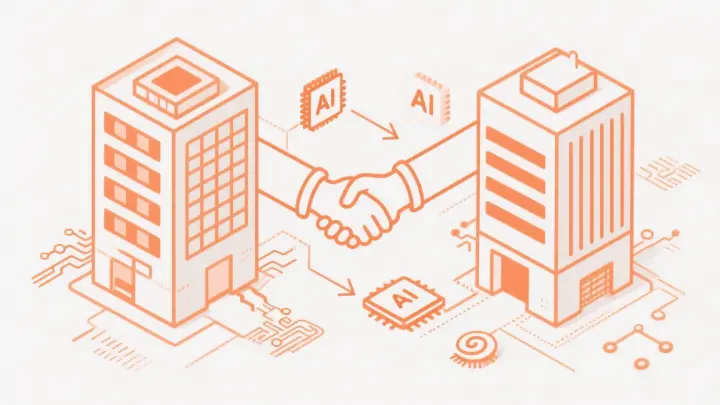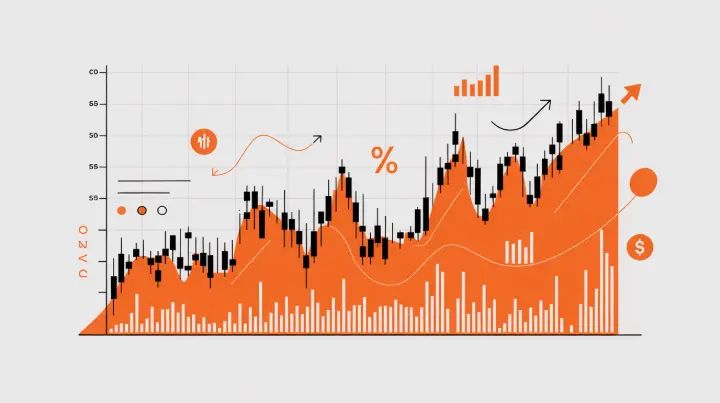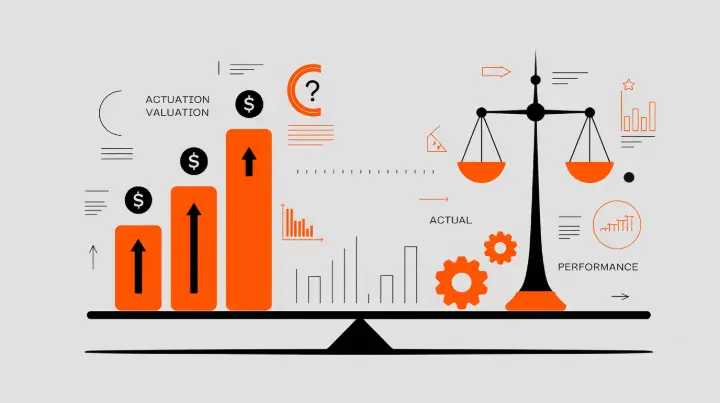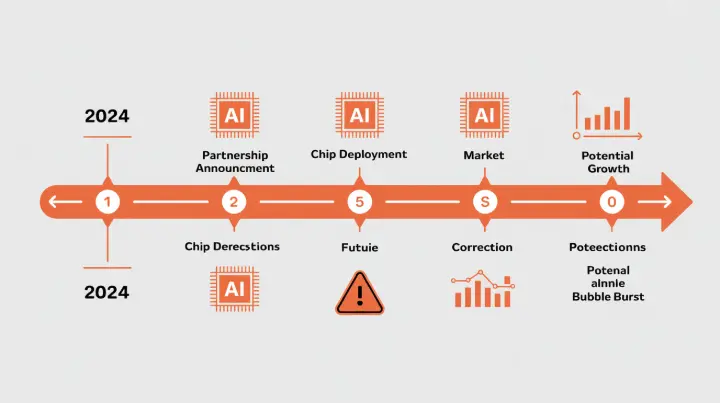The artificial intelligence sector has reached a fever pitch in 2024 and 2025, with massive deals, soaring valuations, and unprecedented stock movements dominating headlines.
At the center of this frenzy sits the recent OpenAI and AMD partnership, a deal that has sent shockwaves through the semiconductor industry and raised critical questions about whether we're witnessing rational market growth or the inflation of a dangerous bubble.
The OpenAI-AMD Partnership: A Game-Changing Deal
AMD recently secured a multi-year AI chip supply agreement with OpenAI that goes far beyond a typical vendor relationship.
The deal includes warrants allowing OpenAI to acquire up to 10% of AMD stock, potentially up to 160 million shares, under certain performance milestones. This unprecedented structure aligns the fortunes of both companies in ways rarely seen in the semiconductor industry.
The technical scope is equally impressive. OpenAI plans to deploy up to 6 gigawatts of AMD compute infrastructure, starting with 1 gigawatt using the upcoming Instinct MI450 series chips and advanced rack-scale systems.
More importantly, OpenAI has become a design partner for AMD's MI450 development, meaning the AI leader's workload requirements are directly influencing AMD's next-generation chip architecture.
For AMD, this represents a golden opportunity to challenge NVIDIA's dominance in the AI accelerator market.
The deal provides AMD with a marquee customer, strengthens its open ecosystem narrative around ROCm software and open standards, and accelerates product development through real-world feedback from one of the most demanding AI labs in the world.
Market Reaction: AMD Stock Surges on AI Momentum
The market's response has been euphoric. AMD's stock jumped sharply following the announcement, with the current price at $228.31, reflecting sustained bullish sentiment.
Analysts have rushed to upgrade their ratings, with some projecting tens of billions in potential revenue over the coming years from this single partnership.
But the excitement extends beyond simple hardware sales projections. The warrant structure has amplified speculation, as investors recognize that if OpenAI exercises its options, AMD shareholders could see significant upside.

In today's AI-driven market, companies are receiving premium valuations simply for their association with artificial intelligence, and AMD is now firmly positioned as a critical AI infrastructure player.
This momentum feeds on itself. Media coverage generates algorithmic trading activity, which attracts fear-of-missing-out retail investors, which drives prices higher still.
The market is pricing in not just current fundamentals but also the intangible strategic value of being deeply embedded in the AI ecosystem.
NVIDIA's Legacy Position and the Competitive Tension
To understand the full picture, we must acknowledge NVIDIA's historical dominance in AI computing. For years, NVIDIA GPUs, interconnects, and software tools have been the default choice for high-performance AI workloads.
The company has invested an estimated $100 billion in infrastructure tied to OpenAI's roadmap and continues to supply significant compute resources to the AI lab.
OpenAI's move to embrace AMD represents a strategic diversification play. By reducing dependence on a single vendor, OpenAI gains negotiating leverage, supply chain resilience, and potentially better economics over time.
However, NVIDIA remains formidable, still commanding the largest share of the AI accelerator market with deep software integration and established customer relationships.
The tension is palpable. As OpenAI shifts some volume to AMD, NVIDIA faces potential pressure on pricing power, margins, and market share, particularly in inference workloads.
Some analysts view the AMD-OpenAI partnership as a direct challenge to NVIDIA's ecosystem lock-in, setting up a competitive battle that will define the next phase of AI infrastructure.

Bubble Warning Signs: Is Exuberance Getting Out of Hand?
Despite the genuine technological progress, several red flags suggest we may be entering bubble territory.
The circular financing structure, where chip vendors offer equity warrants to secure large orders, creates intertwined incentives that blur the line between authentic demand and financial engineering.
Critics note similarities to past tech bubbles where vendor financing masked underlying weakness.
Valuations across the AI sector have become detached from realized performance. Many companies command sky-high market caps based on promised future capabilities rather than current profits.

The concept of Capability Realization Rate highlights this gap: markets are pricing in revolutionary AI advances that may take years to materialize, if they arrive at all.
Physical constraints pose another concern. Scaling compute infrastructure requires not just capital but also power, cooling, data center space, and complex logistics. Supply chain bottlenecks could slow the seemingly infinite scaling that current valuations assume.
Perhaps most tellingly, many enterprises experimenting with generative AI are finding limited short-term return on investment. If the productivity gains fail to materialize quickly, sentiment could shift rapidly.
Even the Bank of England has warned about growing risks that the AI bubble could burst, signaling that concerns extend beyond skeptical analysts to major financial institutions.

What Comes Next?
The AI boom may continue if major labs keep raising capital, governments invest in AI infrastructure, and enterprise adoption accelerates.
However, the widening gap between hype and delivery creates vulnerability to sharp corrections. A bubble doesn't necessarily mean total collapse, but painful adjustments in overvalued segments seem increasingly likely.
Key factors to watch include actual compute deployment timelines, margin pressure as competition intensifies, real-world adoption metrics, and whether AI applications can deliver the transformative returns that current valuations demand.
The OpenAI-AMD partnership represents both the extraordinary potential and the speculative excess of today's AI market.
Whether it proves visionary or marks a peak will depend on execution, market discipline, and whether the technology can live up to the unprecedented expectations now baked into stock prices.